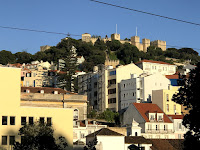Lisbon
Lisbon is the oldest city in Western Europe and one of the oldest cities in the world. It can also be considered Portugal’s youngest city – as much of Lisbon was destroyed by a massive earthquake and tsunami on November 1, 1755.
King Joseph I of Portugal and his family escaped the catastrophe because his daughter had wanted to get away from Lisbon for the holiday. Still, he was so freaked out by the disaster that he refused to live indoors for the rest of his life. Instead, he lived outside of Bélem in a tent compound and mostly left the Marquês de Pombal to deal with the restoration. Under the guidance of the Marquês de Pombal, the city was rebuilt along a grid system in a more utilitarian - and earthquake resistant – style. Thus, much of Lisbon is less than 300 years old.
The contrast between new and old Lisbon can be seen in the wide Avenida da Liberdade that runs from the Praçade do Marquês de Pombal to the Praça dos Restauradores vs the ambling maze of ruas (streets), travessas (lanes), becos (alleys) and escadarias (stairways) of Alfama.
The Avenida is modeled after the Champs-Élysées in Paris, a park-like boulevard lined with beautiful trees, restaurant patios and expensive shops.
At the top of the Avenida da Liberdade, at the Praça do Marquês de Pombal, is a statue of the Marquês with a lion (symbol of power) at his side - appropriately staring from the hilltop down on the statue of King Joseph at the Praça do Comércio. Despite the heroic stance of the King on horseback, I think the placement of this statue tells a story about what the people of Lisbon thought about the relative power of the two.
| The Marquês de Pombal looks down the Avenida at King Joseph at the bottom of the hill below at the Praça do Comércio. In the second statue, the admiring Marquês de Pombal looks up admiringly at his King. In reality, the Marquês ran the country after the Lisbon earthquake. |
 Alfama is built into and atop ancient city walls, with narrow lanes (many too narrow for automobiles), steep staircases and beautiful miradouros (public parks with scenic overlooks offering stunning views of the rooftops and city below).
Alfama is built into and atop ancient city walls, with narrow lanes (many too narrow for automobiles), steep staircases and beautiful miradouros (public parks with scenic overlooks offering stunning views of the rooftops and city below). It is very easy to get lost in Alfama, especially when looking for a specific restaurant or shop. You won’t really be lost from the perspective of being able to find your way out of the neighborhood – just head downhill.










Comments
Post a Comment